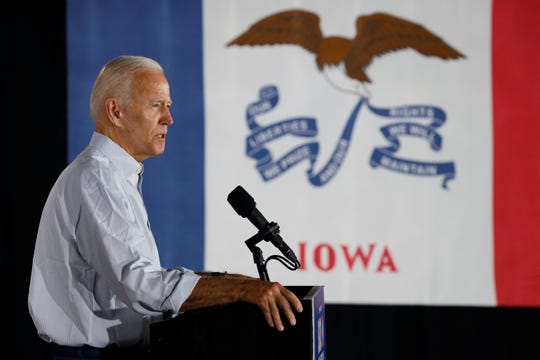| According to research by the Des Moines Register, there were more than 600 individual candidate appearances at events here during the first six months of this year. By the time any actual voting—or, in Iowa's case, caucusing—takes place Feb. 3, the paper estimates there will have been over 3,000 appearances.
I left my hotel in Des Moines, after patiently listening to the clerk explain which table Massachusetts Sen. Elizabeth Warren prefers in the bar, and made the two-hour drive to the Progress Iowa Corn Feed at the NewBo City Market in Cedar Rapids. Ten candidates trekked to this farmers market-style building, each getting a few precious minutes on an outdoor stage to impress a crowd estimated at over 1,000. Nothing was said that would make the evening news. Indeed, the candidates have all repeated pretty much the same things, in bigger or smaller mouthfuls, for months.
Iowa kind of stumbled into its first-in-the-nation position following the tumultuous 1968 Democratic convention in Chicago, as party leaders sought more grassroots participation and less control by back-room bosses. In 1972 Iowa moved up its caucus date and has fiercely held on to the top calendar spot ever since.
Four states start the voting in February: Iowa, New Hampshire, South Carolina and Nevada. But with Iowa first, and the field of 25 Democrats so large, there is more activity here this time around than ever before. That's nice for Iowans but, again, is it the best way for Democrats to pick a candidate?

Former Vice President Joe Biden in Council Bluffs, Iowa, on July 17, 2019. (Photo: Charlie Neibergall/AP)
Just over 3 million people live here, about 91% of them white and only a bit over 3% black. The population of Iowa's largest city, Des Moines, is under a quarter-million. So in size and diversity, Iowa doesn't reflect most of America. And with a Republican governor and two Republican U.S. senators, it isn’t exactly a bastion of progressive politics.
Even some of the very good things about this pleasant place make it atypical. Unemployment is only 2.4%, below the already-low nationwide figure. At roughly $56,000, median household income is only slightly below the national average. And get this: Iowa has the highest high school graduation rate in the country, at about 91%. In sum, it's a generally successful state that doesn't share many of the nation's problems and leans right at a time when Democrats are moving left.
Several campaign staffers I spoke with expressed frustration at the amount of time, energy and budget that is focused here. Yet, they know that while a good Iowa showing doesn't guarantee getting the nomination, losing badly can be a game-ender.
The Democrat who has spent the most time in Iowa and attended the most events is former Maryland Rep. John Delaney, so I asked him for his take on the Hawkeye State's dominant role in the presidential selection process.
"We need a place where the candidates can be vetted on a personal level," he told me. "A state that's not too big. Otherwise, cable television would determine the nominee."
Although Delaney trails significantly in polling, he believes retail politics is his best bet. He has already visited each of Iowa’s 99 counties and is beginning his second swing. "What happens here in Iowa," he says, "is a counterbalance to the social-media primary that doesn't properly reflect the nation or the Democrats."
The intense focus on Iowa is not likely to change unless the Democratic National Committee places limits on time and money that candidates can spend in each state (unlikely). Otherwise, only a national primary, an expansion of Super Tuesday, March 3, when more than a dozen states will all conduct Democratic primaries, would spread the early campaigning more evenly. Of course that might demote smaller states such as Iowa and New Hampshire to being afterthoughts in the candidates' travel schedules.
As Iowa's grip on the nominating process tightens, candidates are doubling down. California Sen. Kamala Harris increased her paid state staff from five to over 65 as of July 1. Other candidates with at least 50 paid staffers here, according to ABC News, are Cory Booker, Elizabeth Warren and polling leader Joe Biden. The former vice president knows not to mess with Iowa: in 2008 he finished fifth in its presidential caucus and his campaign collapsed.
Iowa might not mirror all of America but at least the 2020 Democrats are adapting to corn-belt culture. So far this year the candidates have held 14 campaign events in Iowa churches, and 31 in breweries.
(c) Peter Funt. This column originally appeared in USA Today.
|



